 |
KNOWLEDGE CENTER1 8 9 5 G U N N E R.C O M
|
 |
KNOWLEDGE CENTER1 8 9 5 G U N N E R.C O M
|
Home > Knowledge Center > 30-30 Winchester (.30 WCF)30-30 Winchester (.30 WCF)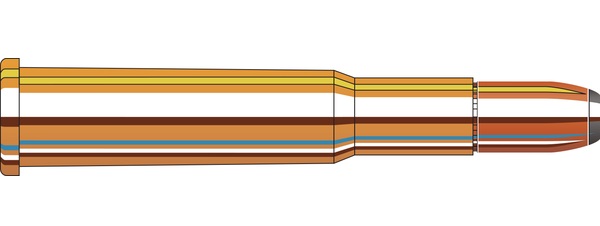 HistoryThe .30 Winchester Smokeless first appeared in Winchester's catalog No. 55, dated August 1895. When chambered in the Winchester Model 1894 carbine and rifle, it was also known as .30 Winchester Center Fire or .30 WCF. When the cartridge was chambered in the Marlin Model 1893 rifle, rival gun maker Marlin used the designation .30-30 or .30-30 Smokeless. The added -30 stands for the standard load of 30 grains (1.9 g) of early smokeless powder and is based on late-19th century American naming conventions for black powder-filled cartridges. Both Marlin and Union Metallic Cartridge Co. also dropped the Winchester appellation, as they did not want to put the name of rival Winchester on their products.The modern designation of .30-30 Winchester was arrived at by using Marlin's variation of the name with the Winchester name appended as originator of the cartridge, but .30 WCF is still seen occasionally. This designation also probably serves to avoid consumer confusion with the different, yet similarly shaped .30-40 Krag, which has been referred to as .30 US and .30 Army.
PerformanceWhen originally produced by Winchester Repeating Arms (WRA) and Union Metallic Cartridge Company (UMC), it was manufactured with a "metal patched" (jacketed) lead bullet weighing 160 gr. One year later, UMC produced a 170-grain bullet offering. Both 150- and 170-grain bullets continue to be very popular, as seen in the number of these weights offered by current manufacturers. However, the 160-grain bullet weight has reappeared in modern cartridges from Hornady, as noted below. Jacketed bullets for the .30-30 are .308 inches in nominal diameter. Cast lead bullets for the .30-30 are also popular and usually are .309 inches in diameter.The .30-30 is considered to be the "entry-class" for modern big-game hunting cartridges, and it is common to define the characteristics of cartridges with similar ballistics as being in ".30-30 class" when describing their trajectory. While it is very effective on deer-sized and black bear-sized game, most commercial loadings are limited in effective range to about 200 yd (183 m) for that purpose, except when using ballistic-tip ammunition. The cartridge is typically loaded with bullets weighing between 150 and 170 grains (9.7–11.0 g), but lighter loads are possible. Bullets of up to 180 gr (11.7 g) can be used, but the overall length restrictions of the lever-action rifles most commonly chambered for this round limit their usefulness. In Canada and the U.S., the cartridge has also been used on moose, caribou, and pronghorn. Modern opinions in Canada on its suitability for moose are mixed. Paul Robertson, a Canadian hunting firearms columnist, says, "Too many moose have been taken with the [.30-30] to rule it out as good for this purpose, as well." In both Canada and the U.S. it has a long history of use on moose. It is generally agreed that the .30-30 is not a good choice for hunters who wish to shoot animals at longer ranges. The cartridge, with flat- or round-nosed bullets, does not meet minimum energy standards required for moose hunting in Finland, Norway, or Sweden. Hunting technique and style, as well as law and culture, dictate cartridge choices. Thor Strimbold, a Canadian who has made more than 20 one-shot kills on moose with a .30-30, advises most moose hunters to use more than minimal power if they can handle the recoil. While the .30-30 is legal for hunting moose in Newfoundland, Canada, provincial game authorities do not recommend its use. One of the primary reasons for the .30-30's popularity amongst deer hunters is its light recoil. Average recoil from a typical 150-grain load at 2,390 feet per second (730 m/s) in a 7.5 lb (3.4 kg) rifle is 10.6 foot-pounds (14.4 J) of felt recoil at the shooter's shoulder, about half that of a comparable rifle chambered for the .30-06 Springfield. However, the .243 Winchester offers more muzzle energy and far greater downfield terminal energy than the .30-30 with similarly light recoil. Because the majority of rifles chambered in .30-30 are lever-action rifles with tubular magazines, most .30-30 cartridges are loaded with round-nose or flat-nose bullets for safety. This is to prevent a spitzer-point bullet (the shape seen on the 7.62×51mm NATO above) from setting off the primer of the cartridge ahead of it in the magazine during recoil, resulting in potentially catastrophic damage to both firearm and shooter. The Savage Model 99 was introduced in 1899 with a rotary magazine, in part, to avoid that issue. When used in single-shot rifles or handguns, such as the Thompson Center Arms Contender or Encore series, it is common for shooters to hand load the cartridge with spire-point bullets for improved ballistics. A notable exception to the "no pointed bullets" guideline for bullet selection in rifles with tubular magazines are the new flexible "memory elastomer"-tipped LEVERevolution cartridges as produced by Hornady. The soft tips of these bullets easily deform under compression, preventing detonations while under recoil in the magazine, yet also return to their original pointed shape when that pressure is removed, thus allowing for a more efficient bullet shape than previously available to load safely in such rifles. The more aerodynamic shape results in a flatter bullet trajectory and greater retained velocity downrange, significantly increasing the effective range of rifles chambered for this cartridge. The .30-30 is by far the most common chambering in lever-action rifles such as the Winchester Model 1894 and the Marlin Model 336. Some earlier Savage Model 99 rifles were chambered for this cartridge, as well. More recently, Mossberg came out with lever-action rifles in the chambering, the Mossberg models 472, 479, and newer 464. One can also find these Mossberg rifles under the brands of Western Field (sold through Montgomery Ward as the M72). The 472 was only produced from 1970 to 1979, and the 479 until 1983 – both of which are rare and often confused with the Marlin 336 due to their similar appearance. The Roy Rogers edition has a gold trigger and butt plate, and Roy Rogers' signature on the stock. Rossi of Brazil has recently started offering what is essentially a clone of the Marlin 336 series in .30-30. Winchester produced a simplified and more economical version of their popular Model '94 through Sears under the Ted Williams name, and through Western Auto under the Revelation label. The rimmed design is well suited for various single-shot actions, so it is commonly found there, as well. Rimmed cartridges are chambered in bolt-action rifles, but .30-30 bolt actions are uncommon today. "At one time Winchester turned out the Model 54 bolt-action repeater in this caliber [.30 WCF], but it was a decided failure, chiefly because the man desiring a bolt action preferred to take one of the better and more powerful cartridges. However, in this particular caliber, the .30 WCF cartridge proved to be decidedly accurate." In addition, rimmed cartridges typically do not feed well with the box magazines normally found on bolt-action rifles. Other examples of bolt-action rifles offered in .30-30 Winchester are the Stevens Model 325, the Savage Model 340, the Springfield/Savage 840, and the Remington 788. In the sport of handgun metallic silhouette shooting, the .30-30 has been used. The Thompson Center Arms Contender pistol, with its compact frame and break-action design, is available for the .30-30 cartridge. The .30-30 will produce velocities of nearly 2000 f/s (610 m/s) out of the 10-in (25-cm) Contender barrel, though recoil and muzzle blast are stronger due to the short barrel. The longer barrel results in significant reductions in felt recoil (due to increased weight) and muzzle blast, with higher velocities, especially if factory-loaded rifle ammunition is used. Magnum Research offers their five-shot BFR revolver in .30-30.
Factory AmmunitionCurrent factory loads from Olin (Winchester brand) include the 150 grain SilverTip, 150 grain Hollow point, 150 grain PowerPoint, all at an advertised at 2,390 fps, along with the 170 grain SilverTip and 170 grain PowerPoint bullets at an advertised 2,200 fps. As mentioned above in the performance section, true velocities from 20” barrels tend to yield 2,100 fps (150 grain loads) and 2,050 fps (170 grain loads).Olin’s 150 grain HP bullet is designed for rapid and complete expansion on lighter game in semi open country. This bullet has been engineered to blow up in such a way as to make up for the .30-30’s mild velocity and kinetic energy. Light rib bones and body tissue are enough to cause bullet blow up leading to small multiple wound channels. Although not prone to exit, fragments can and do exit lighter game at acute angles with the risk of inflicting severe wounds to other animals not directly in the path of the shot. The 150 grain HP does not show any increase in speed of kills over other designs when shots are placed behind the foreleg, even though energy transfer is complete, animals may cover considerable ground before succumbing and will leave no blood trail. Nevertheless, this is still an adequate light game load. Both the Power point and SilverTip bullet designs are fast expanders, performing similarly to each other with cross body shots on lighter medium game. As suggested earlier, velocities being near equal, the heavier 170 grain PP and ST give slightly deeper penetration than their 150 grain counterparts without any loss of wounding potential. Of the two bullet designs, the SilverTip is slightly superior, producing a more optimum balance of expansion versus deep penetration. The PowerPoint expands on impact, loses momentum and continues to expand throughout penetration. The SilverTip performs differently in that its hard aluminum tip is driven into the lead core on impact, causing explosive expansion. Wounding through vital tissues is thorough while at the same time, the hard aluminum tip wipes off the frontal area of the shank allowing deep penetration. Although both will make it through to vitals of medium sized game from most angles, the Silvertip gives slightly more penetration retaining a frontal area of around 13mm as opposed to around 17mm for the PowerPoint, the 170 grain bullets of both styles retain between 110 and 130 grains from raking shots on game weighing up to 80kg (180lb). Penetration on heavy bodied game is often adequate however, as with all .30-30 ammunition, whether factory or hand loaded, wounding becomes less optimal as game weights increase. Current offerings from Remington include the 150 grain soft point Core-Lokt at an advertised 2,390 fps and the 170 grain soft point and hollow point Core-Lokt at an advertised 2,200 fps. Again, velocities tend to be around 2,050 to 2,100 fps for all loads when used in 20” barreled carbines. As a general rule, throughout the calibers, Remington’s Core-Lokt bullet is somewhat tougher than other conventional bullet brands however in the .30-30 line of ammunition, the Core-lokt is very soft. The .30-30 soft point Core-lokt 150 and 170 grain projectiles both develop a large frontal area of around 17mm while retaining around 80% weight, giving similar performance to Winchester’s Powerpoint bullets. The 170 grain HP bullet is, like its competition, designed for maximum expansion and wounding on light bodied game and is best utilized on game weighing under 60kg (130lb). Remington also currently produce a 55 grain .224” saboted accelerator load at 3,400 fps and a 125 grain managed recoil load. The saboted load can be plenty of fun and very effective on light bodied game however, the major difficulty is sighting in. The difference between the POI of standard .30-30 loads and the accelerator load can be over 12” in height along with over 12” of windage adjustment. With scoped rifles, these factors can be overcome and the .30-30 turned into an acceptably accurate for moderate range varmint rifle. With iron sighted rifles, Saboted ammunition is a no go. The velocity of Remington’s 125 grain managed recoil load is the same as the 150-170 grain bullet weights to ensure the load matches iron sights. This style of loading is certainly not new and reduced loads have been around since the .30-30 was first created. As a medium game load, the 125 grain bullet is not nearly as effective as the full penetration (exit wounding) produced by heavier loads and kills can be somewhat delayed which can be of great concern to younger hunters. This load is best used for practice or use on very light bodied game. Federal offer a variety of loads for .30-30 users. Federal’s lightest load features a 125grain flat nose hollow point bullet at an advertised 2,570 fps for realistic velocities of around 2,400 fps. This load does its best work on game 20kg (44lb) and under. Although a high velocity 125 grain bullet may seem a good means of increasing shocking power to the .30-30 for use on deer, results tend to be poor with slow kills on larger animals. Federal’s traditional loads include their 150 grain soft point at an advertised 2,390 and the 170 grain soft point at 2,200 fps, producing velocities and results similar to the Winchester and Remington soft point projectiles. Federal’s premium .30-30 loading features the 170 grain Partition which stands apart from its competition, expanding just as fast as any .30-30 soft point bullet, but out performing conventional loads regarding penetration. This load is capable of tackling heavy bodied deer species in a more consistent manner than traditional .30-30 loadings, albeit with the same limitations regarding potential wound diameters. Hornady’s two .30-30 traditional loadings include the 150 grain round nose Interlock at 2,390 fps and the 170 grain flat point Interlock at 2,200 fps, both giving similar velocities to other brands. The 150 grain Interlock is slightly stouter than the Core-Lokt and PowerPoint bullets and is generally a good lighter medium game bullet. The 170 grain Interlock, tends to develop a larger frontal area than the 150 grain bullet, limiting its ability to penetrate much further, making it not particularly well suited to woods / bush hunting game above 60kg (130lb). Hornady’s most recent invention is the 160 grain Leverevolution FTX. This is a pointed bullet designed specifically for use in lever action rifles. The FTX projectile is of a very similar construction to the Hornady SST but features a soft rubber tip to prevent detonation in tube magazines. Muzzle velocity is rated at 2,400 fps however, velocities from carbines average around 2,200 fps (I am still unsure whether these velocities are deliberate, to match open sights, or whether it is relative to lever gun 20” barrels versus Hornady’s 24” test barrel). The FTX was made in an attempt to produce a flatter trajectory although it struggles to achieve this. BC is .330 which is somewhat higher than the 170 grain Sierra at .248, but only a touch greater than the 170 grain Speer at .298. Nevertheless, Hornady have done their best to optimize the trajectory of the .30-30 and as designs go, this is to a great extent - as good as it gets. The FTX is able to produce clean kills out at ranges of between 180 and 200 yards and while its trajectory is steep, shots at this range can be achieved with scoped rifles and iron sighted rifles alike, thou with iron sights, much practice is needed. The FTX projectile expands immediately upon impact, often creating a larger wound through vitals of medium game than its competitors. In some instances, where major bone is struck, wounding through vitals can be fierce. That said, like all .30-30 caliber projectiles, kills can be delayed due to the lack of hydrostatic shock. The FTX is not an exceptionally deep penetrating projectile, best suited to lighter medium game if raking shots are to be expected. To this end, as a lighter game load, the FTX stands apart from other factory brands.
Final thoughtsI’m a lever gun lover however I stick to straight cased cartridges (or slightly tapered, no bottle neck) so I no longer own a 30-30 or 35 Remington. I have bought and sold or traded away numerous lever guns in both calibers. I think the history behind the 30-30 is extremely interesting and certainly over half of the American hunters have owned or still own one. Probably more deer have been taken between the 30-30 & 35 Remington than any other combination of cartridges. So, this one deserves special attention from future gun owners & collectors and I expect it will live on as long as gun ownership is an option.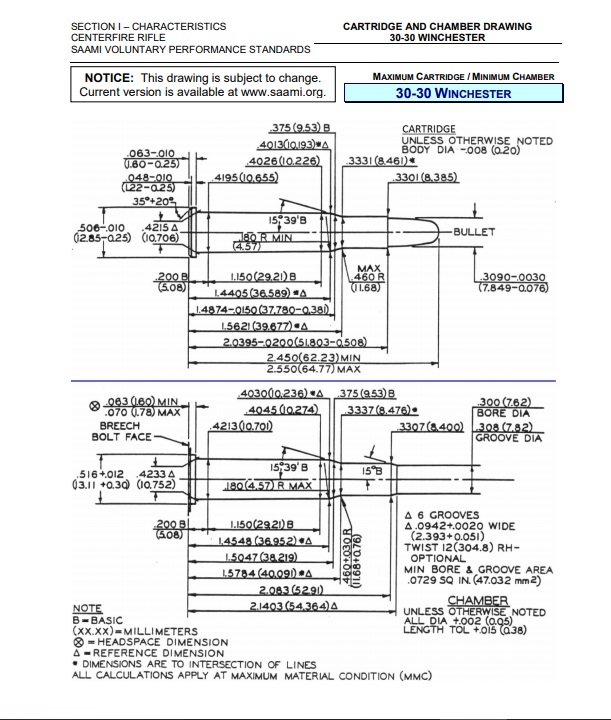 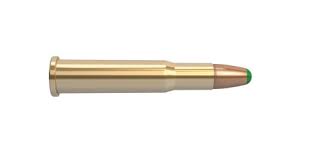 |
| |
|
|
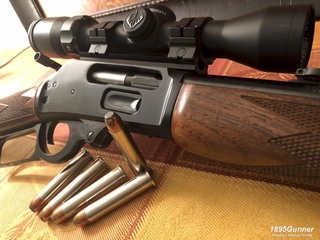 |
 |
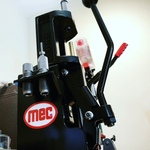 |
 |
 |